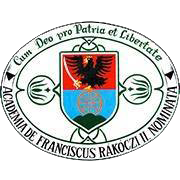Please use this identifier to cite or link to this item:
https://dspace.kmf.uz.ua/jspui/handle/123456789/2217Full metadata record
| DC Field | Value | Language |
|---|---|---|
| dc.contributor.author | Máté Réka | hu |
| dc.contributor.author | Матей Рейка | uk |
| dc.date.accessioned | 2023-03-02T14:31:13Z | - |
| dc.date.available | 2023-03-02T14:31:13Z | - |
| dc.date.issued | 2022 | - |
| dc.identifier.citation | In Acta Academiae Beregsasiensis, Philologica. 2022. I. évfolyam, 2. szám. pp. 283-286. | en |
| dc.identifier.issn | 2786-6718 (Print) | - |
| dc.identifier.issn | 2786-6726 (Online) | - |
| dc.identifier.other | DOI (журнал): 10.58423/2786-6726 | - |
| dc.identifier.other | DOI (випуск): 10.58423/2786-6726/2022-2 | - |
| dc.identifier.other | DOI: 10.58423/2786-6726/2022-2-283-286 | - |
| dc.identifier.uri | http://dspace.kmf.uz.ua:8080/jspui/handle/123456789/2217 | - |
| dc.description | https://aab-philologica.kmf.uz.ua/aabp/issue/view/2 | en |
| dc.description | https://opac3.brff.monguz.hu:443/hu/record/-/record/bibBRF00009649 | en |
| dc.description.abstract | Abstract. The purpose of the book Linguistic Landscape of Nationalities in Hungary (Nemzetiségi nyelvi tájkép Magyarországon) is to show the presence of different nationalities in the linguistic landscape the country. The volume is based on selected materials from the lectures given at the conference entitled The Theory and Practice of the Linguistic Landscape (MTA Research Institute for Linguistics, Multilingual Research Center, Budapest, April 3, 2019). The studies are about the nationalities of Hungary and describe each side of the linguistic landscape of the communities of the Beas, Bulgarians, Croatians, Germans, Armenians, Roma, Romanians, Serbs, Slovaks, Slovenes and Ukrainians. In the foreword, the editor emphasizes that the studies listed in the book faithfully reflect the diversity in the linguistic landscape of the aforementioned nationalities. The authors are members of the communities they present, who in many cases assume an important role (either as activists or researchers) and provide an insight into how the language and culture of their nationality appears in the linguistic landscape of a particular region. The introductory study of the volume summarizes two decades of joint and comparative linguistic research on Hungarian nationalities, that is, the reader can get a picture of the origins of research on the topic in Hungary. Each chapter of the volume is richly illustrated. In order to preserve the quality of the images, unlike the traditional, paper-based issues, it can only be accessed via the Internet. | en |
| dc.language.iso | en | en |
| dc.publisher | II. Rákóczi Ferenc Kárpátaljai Magyar Főiskola | en |
| dc.relation.ispartofseries | ;I. évfolyam, 2. szám | - |
| dc.rights | Attribution-NonCommercial-NoDerivs 3.0 United States | * |
| dc.rights.uri | http://creativecommons.org/licenses/by-nc-nd/3.0/us/ | * |
| dc.subject | Anna Borbély | en |
| dc.subject | Linguistic Landscape of Nationalities in Hungary | en |
| dc.subject | Nemzetiségi nyelvi tájkép Magyarországon | hu |
| dc.title | Anna Borbély ed.: Linguistic Landscape of Nationalities in Hungary (Nemzetiségi nyelvi tájkép Magyarországon). Nyelvtudományi Intézet, 2020, 262 pp. | en |
| dc.type | dc.type.refereesReport | en |
| Appears in Collections: | Acta Academiae Beregsasiensis, Philologica Máté Réka | |
Files in This Item:
| File | Description | Size | Format | |
|---|---|---|---|---|
| Mate_R_Anna_Borbely_ed_Linguistic_Landscape_of_Nationalities_in_Hungary_2022.pdf | In Acta Academiae Beregsasiensis, Philologica. 2022. I. évfolyam, 2. szám. pp. 283-286. | 843.67 kB | Adobe PDF | View/Open |
This item is licensed under a Creative Commons License





